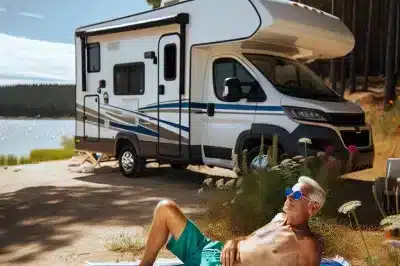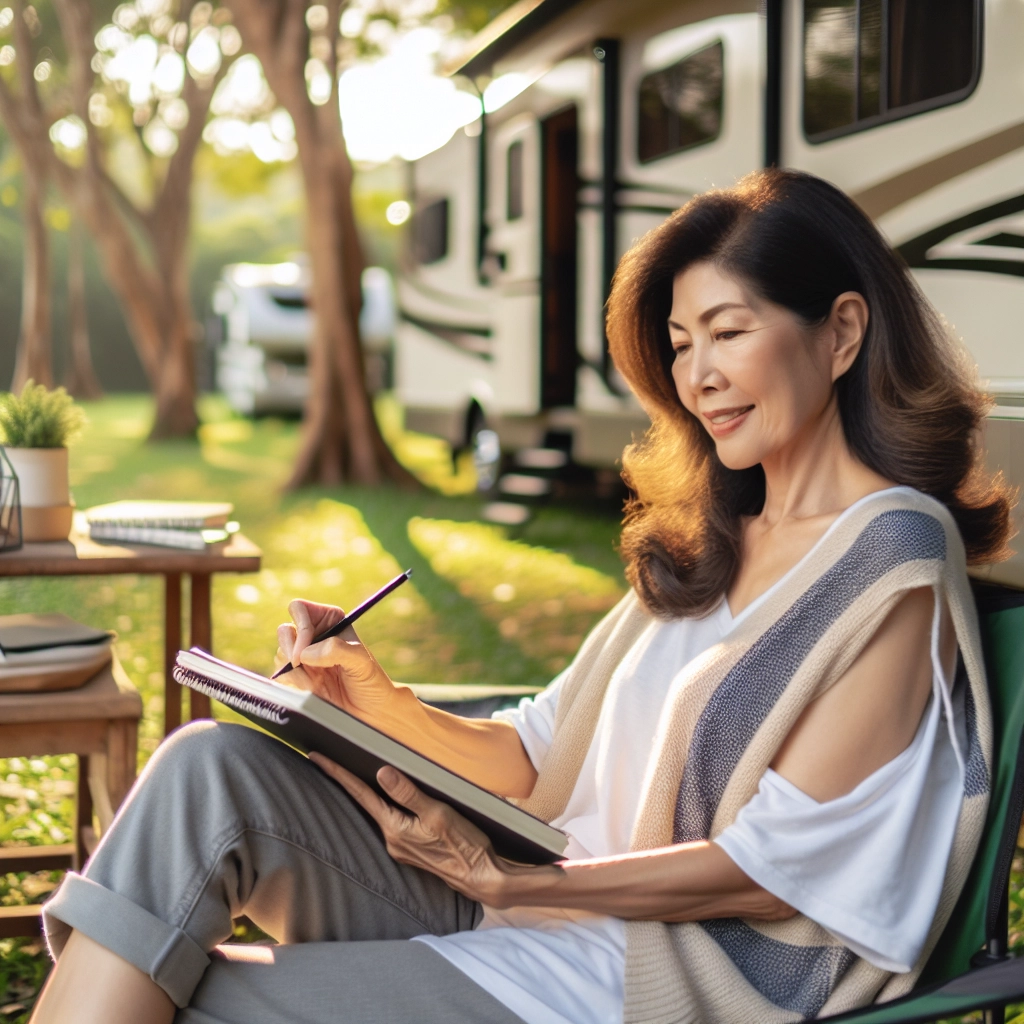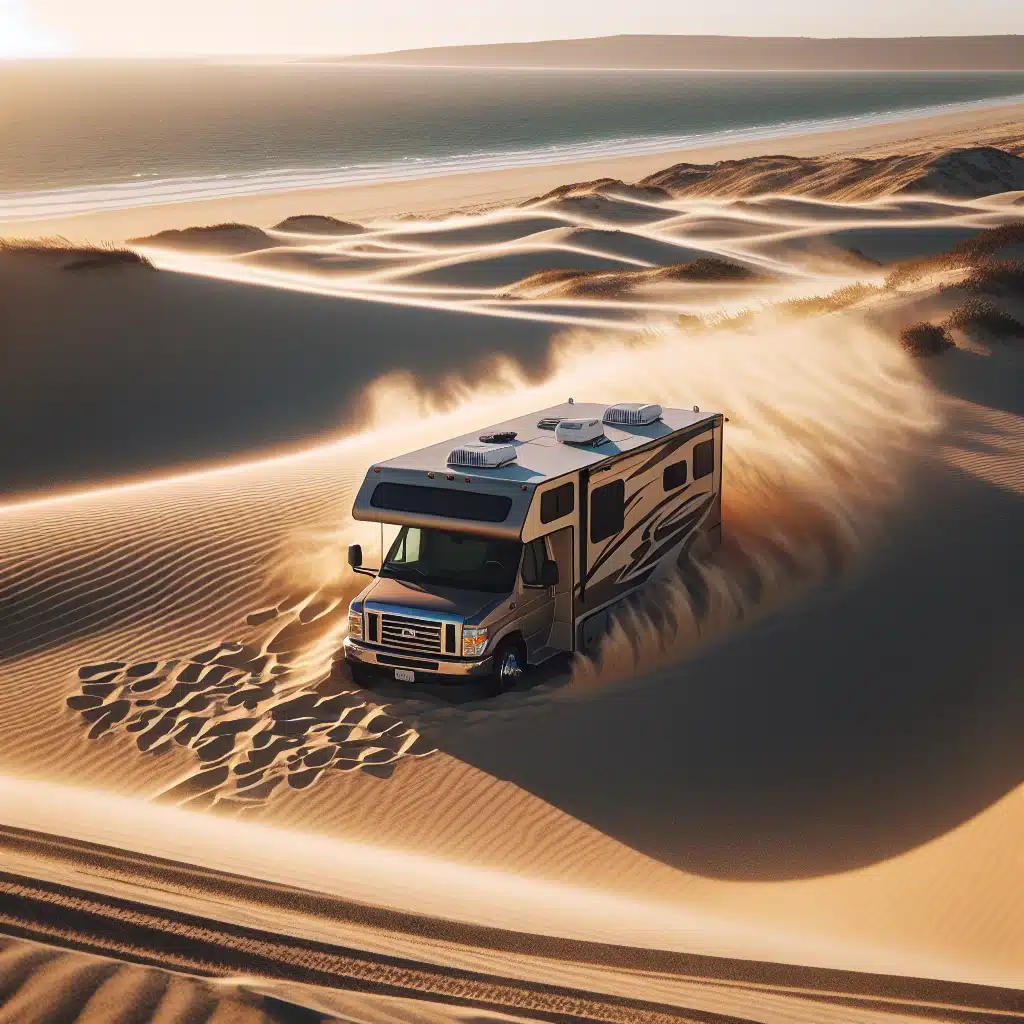Table of Contents

Unlocking the Freedom of Energy: Solar Power for Boondocking
Imagine the freedom of traveling wherever your heart desires without the worry of finding the next power hookup. That’s the promise of solar power for boondocking. It’s about self-reliance, sustainability, and enjoying the great outdoors without leaving a carbon footprint. Let’s explore how you can harness the sun’s energy to power your adventures.
Key Takeaways
- Boondocking is the ultimate freedom for RV enthusiasts, but it requires a reliable power source.
- Solar power systems offer a cost-effective and eco-friendly solution for energy needs while off-grid.
- Understanding your energy consumption is crucial in choosing the right solar setup for your RV.
- Investing in solar power can lead to significant savings over time compared to traditional power sources.
- Setting up a solar system might seem daunting, but with the right guidance, it’s a journey worth taking.
What is Boondocking and Why Solar?
Boondocking, or dry camping, is the practice of parking your RV in a place without traditional hookups like power, water, or sewer. It’s the art of living off the grid, and it’s gaining popularity among RVers who crave the tranquility of nature and the excitement of exploration. But to truly enjoy this freedom, you need a reliable power source, and that’s where solar comes in. Solar panels convert sunlight into electricity, providing a silent, green, and cost-effective way to keep your batteries charged and your adventures going.
The Economic Advantage of Solar Power
When you choose solar power for boondocking, you’re not just making an eco-friendly choice; you’re also opting for long-term savings. While the upfront cost of a solar system might seem high, it pays off by:
- Eliminating the cost of campsite fees for power hookups.
- Reducing or completely cutting the need for generator fuel.
- Minimizing maintenance costs compared to traditional generators.
- Providing a renewable source of energy that’s free once the system is installed.
- Increasing the resale value of your RV with a modern, appealing feature for potential buyers.
Deciphering Solar Needs for Your RV
Before jumping into the solar-powered world, it’s essential to understand your RV’s energy needs. Every appliance and device in your RV has a specific power requirement, and the total energy consumption will guide you in selecting the right size and number of solar panels. Let’s break down the steps to ensure you’re well-equipped for your off-grid adventures.
Here’s what you need to consider:
- The total wattage of all the appliances and devices you’ll be using.
- How many hours per day you’ll be using each appliance or device.
- The amount of sunlight available in the areas you plan to travel.
- The capacity of your RV’s battery bank to store the solar energy.
- Seasonal variations in sunlight that might affect your solar input.
By understanding these factors, you’ll be on your way to building a solar system that not only meets your energy needs but also fits your budget. Remember, the goal is to create a balance between the freedom of boondocking and the comfort of having power when you need it.
Assessing Your Energy Consumption
Before you can harness the power of the sun, you need to know how much energy you’re using. Start by making a list of all the electrical devices you’ll use in your RV. For each device, check the power rating, usually listed in watts, and estimate how many hours per day you’ll use it. Add up the wattage for all devices, and multiply by the hours used to get your daily consumption in watt-hours. This number is your energy consumption benchmark and will guide you in choosing the right solar setup.
Understanding Solar Panel Types and Efficiencies
Solar panels come in various types, each with its own efficiency and cost. The most common types are monocrystalline, polycrystalline, and thin-film panels. Monocrystalline panels are the most efficient and the most expensive, but they perform better in low-light conditions and take up less space. Polycrystalline panels are a more affordable option with slightly lower efficiency. Thin-film panels are the least efficient and require more space, but they’re lightweight and flexible, making them ideal for certain RV setups. Your choice will depend on your energy needs, space availability, and budget.
Battery Types: Finding Your Fit
The next step is choosing the right battery to store the energy your solar panels generate. There are several types of batteries to consider, including lead-acid, AGM, gel, and lithium-ion. Lead-acid batteries are the most common and cost-effective but require regular maintenance. AGM and gel batteries are maintenance-free but more expensive. Lithium-ion batteries are the most expensive but offer the longest lifespan and best performance. Consider factors like lifespan, maintenance, weight, and cost when selecting your battery type.

Curating Your Solar Setup: Components and Costs
Creating the perfect solar setup for your RV involves more than just panels and batteries. You’ll need a charge controller to regulate the power flow, an inverter to convert DC power to AC for your appliances, proper wiring, and mounting hardware. The costs can vary widely based on the quality and capacity of these components. A basic setup might start around a few hundred dollars, while a more comprehensive system can run into the thousands. It’s all about finding the balance that works for your needs and budget.
The Core Elements of a Solar Power System
The core elements of a solar power system include the solar panels, charge controller, battery bank, inverter, and the mounting and wiring systems. Each component plays a crucial role in the efficiency and functionality of your setup. The solar panels capture sunlight and convert it into electricity. The charge controller ensures your batteries charge correctly and prevents overcharging. The battery bank stores the energy for use when the sun isn’t shining. The inverter converts the stored DC power into AC power for your appliances. And finally, the mounting and wiring systems secure your panels and connect all the components. Choosing the right combination of these elements is key to a successful solar power system for boondocking.
Calculating the Costs: Panels, Batteries, and Accessories
Let’s talk numbers. The cost of solar panels varies based on type and wattage, with prices ranging from $1 to $2 per watt. Batteries also differ in cost; a standard lead-acid battery can start around $100, while a high-end lithium-ion battery may cost $1,000 or more. Don’t forget the charge controller, inverter, and mounting hardware, which can add several hundred dollars to your total. Here’s a quick rundown:
- Solar panels: $100-$400 each for typical RV sizes
- Batteries: $100-$1,000+ depending on type and capacity
- Charge controller: $20-$200 based on features and amperage
- Inverter: $100-$1,000+ depending on wattage and type
- Mounting hardware and wiring: $50-$300
When you tally up these costs, a basic setup might cost you around $500, while a robust system could exceed $3,000. Remember, this is an investment in your freedom and long-term savings on energy costs.
DIY vs Professional Installation: A Cost Comparison
Installing your solar setup can be a rewarding DIY project, or you might prefer the peace of mind that comes with professional installation. Doing it yourself can save you anywhere from $1,000 to $3,000 in labor costs. However, if you’re not confident in your electrical skills, a professional can ensure your system is safely and efficiently installed. Here’s what you can expect to pay:
- DIY installation: $0 (just your time and effort)
- Professional installation: $1,000-$3,000+ depending on system complexity
Consider your skill level, the complexity of your system, and the value of your time when deciding between DIY and professional installation.
Sun-Powered Journeys: Getting Started with Solar Boondocking
Embarking on a solar-powered journey begins with understanding your energy needs and ends with the satisfaction of self-sufficient travels. The process of transitioning to solar boondocking can be straightforward with the right preparation and mindset. Let’s get you started on this exciting path.
Step-by-Step Guide to Installing Solar Panels on Your RV
Installing solar panels on your RV is a project you can tackle with a bit of guidance. Here’s a simplified step-by-step guide:
- Plan your system based on your energy assessment.
- Purchase the right solar panels, batteries, and components.
- Find the optimal location on your RV’s roof for panel installation.
- Securely mount the panels, ensuring they’re angled for maximum sun exposure.
- Install the charge controller at a location close to the batteries.
- Connect the panels to the charge controller using the proper gauge wiring.
- Link the charge controller to the battery bank.
- Connect the inverter to the battery bank, allowing for AC power usage.
- Test the system to ensure everything is working correctly.
Each step requires careful attention to detail and adherence to safety protocols, but with patience, you can achieve a fully functional solar setup.
Maintenance Tips to Maximize Solar Performance
Once your solar system is up and running, regular maintenance is key to maximizing its performance. Here are some tips to keep your system in top shape:
- Clean your solar panels regularly to remove dust, dirt, and debris.
- Check the battery water level (if using lead-acid batteries) and refill as needed with distilled water.
- Inspect all wiring and connections for signs of wear or corrosion and tighten any loose connections.
- Monitor your system’s performance to catch any issues early.
- Keep trees and other obstructions trimmed to ensure your panels get full sunlight.
- Consider using a solar panel monitoring system to track energy production and usage.
With these maintenance practices, your solar system will continue to provide reliable power for your boondocking adventures for years to come.
Troubleshooting Common Solar System Issues
Even the best solar systems may encounter hiccups along the way. Here are some common issues you might face and how to address them:
- No Power Output: Check for loose connections and ensure all switches are turned on. Inspect the charge controller and inverter for any error messages.
- Insufficient Charging: Clean your solar panels and check for any shading that may occur during the day. Also, verify that your battery bank is sized appropriately for your energy needs.
- Battery Not Holding Charge: Perform a battery health check and look for signs of sulfation or damage. It might be time to replace your batteries if they’re old or worn out.
- Inverter Issues: Reset the inverter and check for any tripped breakers. If problems persist, consult the manufacturer’s troubleshooting guide.
- Intermittent Power: This could be due to overheating components or loose wiring. Ensure adequate ventilation for all system components and secure all electrical connections.
Remember, regular system checks can prevent many issues before they start. When in doubt, consult with a solar technician who can help diagnose and fix the problem.

Living Off the Grid: Stories from the Solar-Powered Road
There’s nothing quite like hearing real-life stories to understand the impact of switching to solar power for boondocking. These tales from the road shed light on the practicalities and joys of living off-grid with solar energy.
Case Study: A Family’s Transition to Solar Boondocking
The Johnson family had always loved the idea of exploring the country in their RV, but the cost of staying at campgrounds with hookups was adding up. They decided to invest in a solar setup, and after a few months of preparation, they hit the road. With a 400W solar panel array and a 200Ah lithium battery bank, they found themselves able to camp in remote locations without sacrificing comfort. Their children learned about renewable energy, and the family saved money they would have spent on campsites and fuel for a generator. Solar power gave them the freedom to explore and the peace of mind that they were doing it sustainably.
Interview: Insights from Long-Term Solar RVers
“We’ve been on the road for over five years with our solar-powered RV,” says Mike, a seasoned boondocker. “The initial setup was a bit of a learning curve, but now it’s just part of our lifestyle. The best part is the silence – no generator rumbling in the background. Our advice to newbies? Start small, learn your system inside and out, and don’t be afraid to ask for help from the community. There’s a wealth of knowledge out there, and solar RVers are some of the friendliest folks you’ll meet.”
FAQs: Answers to Your Burning Questions About RV Solar Power
Got questions about RV solar power? You’re not alone. Here are some of the most common queries answered to help you on your journey to energy independence.
How Much Will a Reliable Solar Setup Cost?
The cost of a reliable solar setup can vary widely, from as little as $500 for a basic system to $5,000 or more for a high-end setup with ample power storage and advanced monitoring. Factors that affect the cost include the quality and size of your solar panels, the type of batteries you choose, and whether you install the system yourself or hire a professional.
Can I Run My Air Conditioner on Solar Power?
Running an air conditioner on solar power is possible, but it requires a significant amount of energy. You’ll need a large solar array and battery bank, as well as an inverter that can handle the high power draw. It’s crucial to calculate your AC’s energy consumption and design your system accordingly.
How Do I Calculate the Amount of Solar Power I Need?
To calculate the amount of solar power you need, list all the devices and appliances you plan to use, note their wattage, and estimate how many hours per day you’ll use them. Multiply the wattage by the hours to get your daily watt-hours. This figure will help you determine the size of your solar panel array and battery bank.
What’s the Best Way to Maintain My Solar System?
– Regularly clean your solar panels to ensure maximum efficiency.
– Check and maintain your battery water levels if using lead-acid batteries.
– Inspect cables and connections for wear and tear.
Monitor your system’s energy production to detect any drops in performance.
Keep an eye on the charge controller and inverter for any error messages or alerts.
Maintaining your solar system ensures it runs smoothly and lasts for many years.
Is it Possible to Upgrade My Existing Solar System?
Yes, it’s possible to upgrade your existing solar system. You can add more panels, upgrade your battery bank, or even switch to a more efficient charge controller or inverter. When upgrading, ensure all components are compatible and that your RV can handle the additional weight and space requirements.
And there you have it—solar power for boondocking demystified. With the right setup, you can soak up the sun’s rays and turn them into clean, cost-effective energy to power your RV adventures. Whether you’re a weekend warrior or a full-time road tripper, solar power can give you the freedom to explore the great outdoors on your own terms. So go ahead, take the plunge into solar-powered boondocking. The sun is shining, and the open road awaits!
- Boondocking RVs: Flexible Solar Solutions – 3 March 2024
- Renewable Energy Tips for Full-Time Boondocking RVers – 2 March 2024
- Boondocking Solar Power Systems: Sizing Options & Solutions for Motorhomes – 1 March 2024
